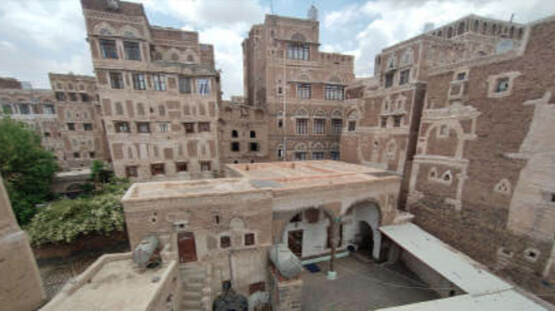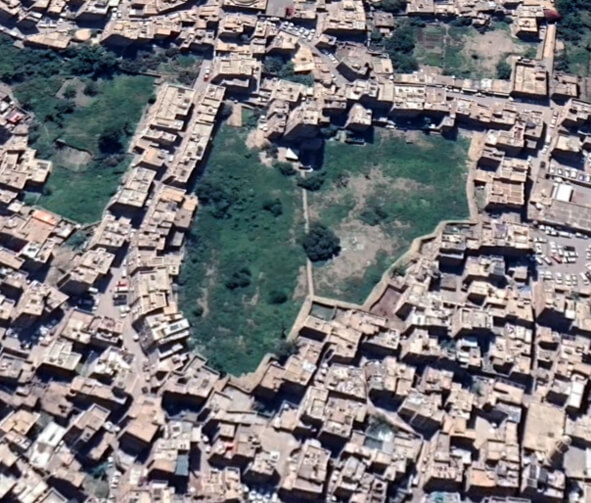
Al-Jamāliyyah Mosque – Old Ṣan‘ā’
مسجد الجمالية – صنعاء القديم ة
Monument description
Jamal Addin Mosque is one of the full-blown mosques in the city of Sana’a, in the Jamal Al-Din neighborhood, and it is located near the Talha Mosque and Al-Washli Mosque, before the road from Al-Washali to Talha. According to what Al-Hajari mentioned, the Jamal Al-Din Mosque is old and its construction dates back to before 793 AH. The Imam, who trusts in God, Sharaf Al-Din Yahya bin Shams Al-Din, son of Imam Al-Mahdi Ahmed bin Yahya bin Al-Murtada, repaired this mosque, and also Umar Al-Mutahirih in the first half of the 10th century.

Architectural and cultural value
Construction style and built date: The layout of the Mosque is in the style of mosque planning, which consists of a Prayer Hall with a flat roof built with wooden beams, resting directly on the capitals of stone columns and arches. The construction of Jamal Al-Din Mosque dates back to before 793 AH.
Components of the Mosque: The Prayer Hall, the Righteousness, Al-Saqifa, the domed Ablutions Unit, traditional baths and School (Al-Melameh).
- Justifications for intervention:
- 1. Neglecting the competent authorities in carrying out periodic restoration work due to the lack of budgets for the repair.
- 2. Preserving the monument from disappearance and stopping the damage caused to the Monument from expanding
- 3. Restoration of the damage to the Mosque resulting from the flight strikes of the southern part of the Old City of Sana’a.
- 4. Contribute to the restoration of damaged Monument in a proper manner in order to keep Old Sana’a in the World Heritage List.
- Monument conditions:
- Damages resulting from the old building or building and time factors, damages resulting from wrong repairs, damages resulting from previous poor restoration, and damages resulting from water leakage into the mosque, and these damages include.
1- The presence of cracks on the walls of the structure from the inside
2- The walls of the sanitizers, especially the ones that have been restored, were smashed
3- The presence of a trace of moisture and salts on the external facades of the walls of the structure
4- Some of the architectural elements of the mosque were demolished, for example, in the balcony of the western entrance to the mosque
5- Cracks in the ceiling surfaces, such as the School (Meelamah) ceiling.

Countries










